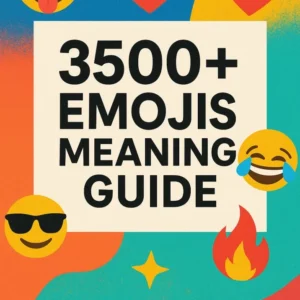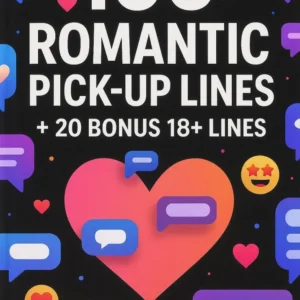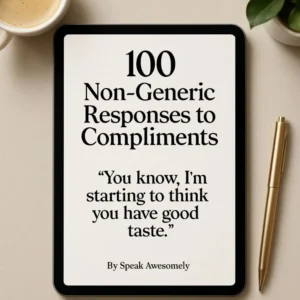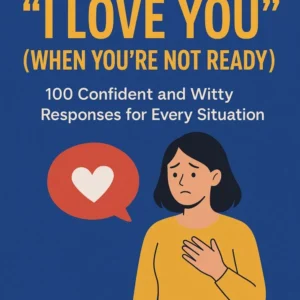Introduction: Do you ever feel your writing sounds repetitive?
When I was preparing a university essay a few years ago, I realised that I had ended three sections with the exact same phrase: “In conclusion.” It struck me—if I was bored of my own writing, how would my lecturer feel reading it? That was the turning point when I began experimenting with alternatives. Surprisingly, shifting a single phrase at the end of an essay, article, or business report made the tone feel fresher, more professional, and more engaging.
Most lists online suggest the obvious alternatives like “To sum up” or “To wrap things up.” But here, we’ll explore less common, but highly effective substitutes you can start using right away. Along the way, I’ll share what worked in my own writing, highlight expert recommendations, and show you how these alternatives can make your communication more memorable.
Why Bother with Alternatives to ‘In Conclusion’?
Repetition in language can dull your message. Dr. Bryan Garner, author of Garner’s Modern English Usage, explains that readers notice recurring patterns, and overused transitions signal predictability rather than professionalism. In fact, a 2021 study on academic writing trends found that the most common transitional phrase was “in conclusion”—making your piece sound like countless others if you use it.
Whether you’re writing a research paper, business proposal, or a casual blog post, choosing unique transitions can:
- Enhance clarity and flow
- Keep your audience engaged until the very end
- Signal authority through careful word choice
- Differentiate your writing from the AI-like, templated tone many readers are growing wary of
Less-Known Alternatives to ‘In Conclusion’
Below are some lesser-used yet powerful options that can help you sign off with style.
1. “Ultimately”
I first experimented with “ultimately” when writing an argumentative essay. Instead of sounding like a dull summary, it framed my final thought as the natural outcome of all preceding evidence.
Example: Ultimately, effective teamwork relies not only on communication but on shared accountability.
Why it works: It signals a logical ending while still sounding professional and direct.
2. “As a Final Observation”
This is particularly strong in analytical writing. Dr. Alice Freedman, a linguist at King’s College London, notes that phrases which frame the ending as an “observation” carry more reflective weight.
Example: As a final observation, the shift towards renewable energy highlights society’s collective push for sustainability.
Why it works: It positions your conclusion as a thoughtful remark, rather than a mechanical summary.
3. “Bringing It All Together”
I used this phrase when closing a client presentation, and they later told me it made the wrap-up feel conversational rather than stiff.
Example: Bringing it all together, our marketing approach merges creativity with measurable impact.
Why it works: It has a natural, spoken quality that works well for presentations, speeches, or blog posts.
4. “What This Means Is”
This alternative moves beyond restating your points and instead interprets them. It’s particularly effective when you want the reader to walk away with a clear takeaway.
Example: What this means is that small lifestyle changes can significantly reduce the risk of heart disease.
Why it works: It focuses on the implication, not just the summary.
5. “At the End of the Day”
Though sometimes used conversationally, in writing it can pack impact if used sparingly.
Example: At the end of the day, leadership is less about authority and more about influence.
Why it works: It grounds the message in a real-world, no-nonsense way.
6. “The Bottom Line”
This is common in business circles but surprisingly underused in academic and creative writing.
Example: The bottom line is that customer retention is more cost-effective than acquisition.
Why it works: It conveys directness and authority.
7. “Stepping Back”
I’ve found this helpful when writing reflective essays. It encourages the reader to consider the bigger picture.
Example: Stepping back, it becomes clear that technology’s true role is to amplify human potential, not replace it.
Why it works: It reframes the discussion in broader terms, leaving readers with perspective.
8. “Looking Ahead”
Rather than ending on the past or present, this directs attention forward. A 2022 Harvard Business Review article emphasised that forward-looking conclusions inspire action and anticipation.
Example: Looking ahead, businesses that adapt quickly to digital change will thrive in the next decade.
Why it works: It transforms the ending into an opportunity for future-focused thinking.
9. “To Put It Simply”
This works when you want to distil complex arguments into a single, powerful point.
Example: To put it simply, trust is the currency of modern business.
Why it works: It strips away complexity, leaving a memorable closing line.
10. “In the Final Analysis”
Less common in everyday writing, this phrase carries academic weight and authority.
Example: In the final analysis, education remains the cornerstone of societal progress.
Why it works: It has gravitas, making it suitable for essays, research, or professional reports.
How to Choose the Right Alternative
Not every phrase works in every context. From my experience, here’s how to decide:
- Academic writing → Use “in the final analysis” or “as a final observation.”
- Business communication → Use “the bottom line” or “ultimately.”
- Casual writing/blogs → Use “bringing it all together” or “at the end of the day.”
- Persuasive writing → Use “what this means is” or “looking ahead.”
Think of these as tools in a kit—select the one that fits your tone and audience.
Expert Tip: Avoid Sounding Mechanical
Professor Deborah Cameron, an authority on linguistics at the University of Oxford, often warns against formulaic writing. Overuse of transitional phrases can signal laziness rather than skill. Instead, she recommends variety and intentionality: use alternatives sparingly, and ensure they align with your message’s tone.
FAQs
Q: Can I still use “in conclusion” sometimes?
A: Absolutely. The key is not to overuse it. If it feels natural, use it, but mix in alternatives for variety.
Q: Which alternatives work best for academic writing?
A: “In the final analysis” and “as a final observation” are strong choices.
Q: How do I keep my writing from sounding robotic?
A: Blend transitions naturally into your writing. Avoid stacking them in every section.
Q: Are these alternatives acceptable in formal reports?
A: Yes, but match the formality. For instance, “the bottom line” may not suit legal writing but works well in business contexts.
Final Thoughts
Words shape the impression you leave behind. Overusing “in conclusion” risks making your writing predictable, but exploring less-known alternatives can refresh your voice and signal authority. In my own journey as both a student and professional writer, swapping out tired phrases has made my work not only clearer but also more persuasive.
So, the next time you’re wrapping up a paper, report, or presentation, consider reaching for one of these alternatives. Which one will you try first?
Your Turn: What’s your favourite way to end an essay, email, or report? Share it in the comments—I’d love to hear how you make your writing stand out.
Read Also: Best Good Morning Alternatives That Are Less Known but Hilarious
Recommended Products

3,500+ Emoji Meanings Guide (2025 Edition) – Speak Awesomely’s Ultimate Digital Handbook for Every Emoji Explained
Original price was: $ 30.$ 10Current price is: $ 10.Add to Cart
100 Romantic Pick-Up Lines + 20 Bonus 18+ Lines | Modern Dating & Flirting Guide for Confidence, Charm, and Attraction
Original price was: $ 25.$ 10Current price is: $ 10.Add to Cart
100 Witty & Unexpected Responses to Compliments – Speak Awesomely’s Ultimate PDF Guide for Confident, Clever Conversations
Original price was: $ 15.$ 6Current price is: $ 6.Add to Cart
100 Smart & Heart-Savvy Responses to ‘I Love You’ (When You’re Not Ready) – Speak Awesomely’s Essential Communication Guide
Original price was: $ 17.$ 10Current price is: $ 10.Add to Cart








